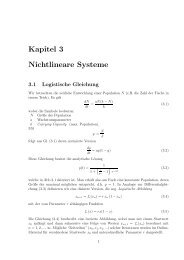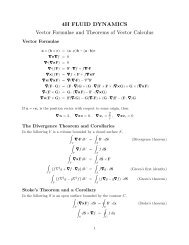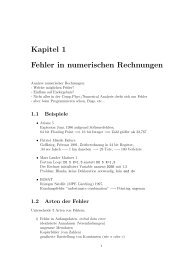Electromagnetic Waves
Electromagnetic Waves
Electromagnetic Waves
Create successful ePaper yourself
Turn your PDF publications into a flip-book with our unique Google optimized e-Paper software.
If we consider waves propagating in one direction, say x-direction then<br />
the fundamental solution is:<br />
u(x, t) = Ae ik(x−vt) + Be −ik(x+vt)<br />
which represents waves traveling to the right and to the left with<br />
propagation velocities v which is called phase velocity of the wave.<br />
⋆ From the divergence relations of (1) by applying (6) we get<br />
(8)<br />
n · E = 0 and n · B = 0 (9)<br />
This means that E (or E) and B (or B) are both perpendicular to the<br />
direction of propagation n. Such a wave is called transverse wave.<br />
⋆ The curl equations provide a further restriction<br />
B = √ µɛn × E and E = − 1<br />
√µɛ n × B (10)<br />
The combination of equations (9) and (10) suggests that the vectors n, E<br />
and B form an orthonormal set.<br />
Also, if n is real, then (10) implies that that E and B have the same<br />
phase.<br />
<strong>Electromagnetic</strong> <strong>Waves</strong>

















